By Robin Overbay
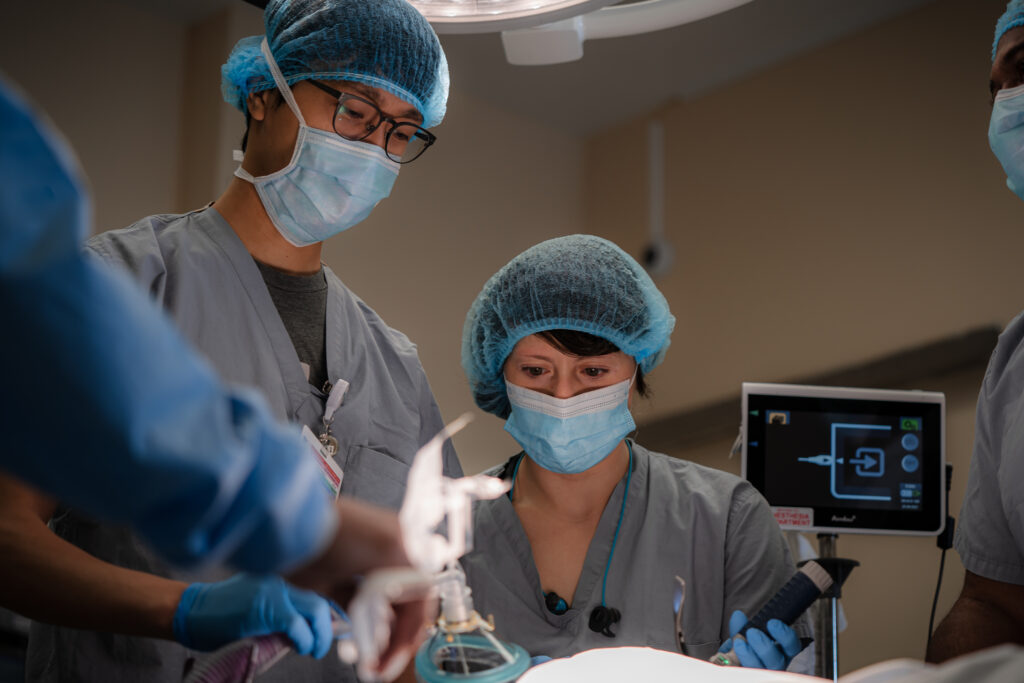
The Association of American Medical Colleges predicts the U.S. will face a shortage of upwards of 120,000 physicians within the next decade — and the anesthesiology profession is already experiencing significant staffing shortages. NAPA believes the solution to bridging this gap is strong leadership and team cultures that support recruitment and strengthen retention.
Adam Smith, often dubbed the father of modern economics, first popularized the law of supply and demand. For the anesthesia profession, this theory is becoming increasingly more relevant.
“As it pertains to two key specialties that are very important to dealing with acute life-changing events — anesthesia and perioperative nursing — across the nation, healthcare has experienced a major staffing shortage for quite some time,” says John F. Di Capua, MD, CEO of North American Partners in Anesthesia (NAPA). “In anesthesia, we are in a critical shortage today.”
Demand Outweighs Supply
Anesthesia staffing shortages result from multiple factors. One in particular is a marked increase in demand for anesthesia providers. Some of the circumstances influencing demand for anesthesia include:
- A growing aging patient population in the U.S. seeking surgical and pain management services
- Increased use of anesthesia clinicians who medically manage complex cases in outpatient settings
- Medical innovations that offer greater surgical treatments for sicker patients
According to the U.S. Census, Americans over the age of 65 will make up 21% of the U.S. population by 2030. Increased longevity places increased demand on the medical profession. As Americans age, their risk of having a condition that leads to surgery, or other procedures that require anesthesia, increases.
“People over 65 require twice as much surgery as people under 65,” notes Dr. Di Capua, “and anesthesia is an essential component of the perioperative process.”
Expanded Care Settings
Historically, anesthesia professionals worked only in hospital operating rooms (ORs). In recent years, the Centers for Medicare & Medicaid Services has approved thousands of procedures—many of them complex—to move into an ambulatory setting. Today, that shift continues, now including office-based settings. This evolution of surgery enables many patients to receive care in a more accessible environment, and gives clinicians more control over their schedules. However, this migration of cases spreads the existing anesthesia clinician population even thinner to maintain exceptional levels of quality, safety, and satisfaction for patients and surgeons.
“Hospitals are using anesthesiologists in the same or greater capacity as they were previously, due to population growth and overall increased demand,” Dr. Di Capua says. “We’re expanding in hospitals, and we are also exploding in the ambulatory space.”
Medical Innovation and Other Factors Driving Demand
The advent of interventional cardiology, gastroenterology and radiology techniques and less invasive procedures has accelerated the demand for anesthesia providers. Due to the increase in less invasive procedures, more patients are now considered candidates for surgery who would not have been candidates for traditional, open approaches.
“Medical innovation has created a whole new class of treatments that can benefit people who would not have previously been candidates for surgery, and that’s wonderful,” Dr. Di Capua says. “However, these innovative procedures have increased the total volume of procedures/surgeries anesthesiology is asked to cover.”
Supply Side Shortage Factors
Other factors have impacted the supply of anesthesiologists and related professionals by reducing the number of providers in the field, including:
- Changes in reimbursement structure
- Clinician burnout
- Inability of training programs to offer enough placement opportunities for medical students seeking the field of anesthesiology
- Long training times for anesthesiologists, certified registered nurse anesthetists (CRNAs) and certified anesthesiologist assistants (CAAs)
- Retirements in the profession due to COVID-19 and other reasons
The causes for increased demand — longevity, pushing to lower cost environments and medical innovations — are what Dr. Di Capua considers positive factors within our society that unintentionally affect the nation’s clinician shortage. However, he sees many of the supply side aspects, such as burnout and reimbursement changes, as negative factors — disincentives for people to practice anesthesia.

Barriers to Training
“We are not keeping up with students learning the procedures they need to do through training; in fact, we are falling behind,” Dr. Di Capua says. “The federal government supports medical education, but there has been a federal cap on GME funding — the money that is being used to train physicians of various specialties — for decades. This has resulted in significant challenges for hospitals to train new medical professionals and keep up with the population explosion.”
Years of Burnout
Society is aware of nursing shortages brought on by the pandemic and clinician burn out. However, the anesthesia space was already experiencing a shortage. For years leading up to the pandemic, anesthesia providers were asked to work late or to work additional shifts, and through the good will of those providers — anesthesiologists, CRNAs and CAAs — they were able to support their communities.
“During the pandemic, elective surgery pretty much shut down, but that doesn’t mean that anesthesia providers were not needed or weren’t heavily utilized,” Dr. Di Capua says. “They drew upon their critical care training to help cover ICUs and form intubation teams. After the pandemic, anesthesia departments began to acutely feel the effects of years of shortages. People go into medicine because they truly want to help, but you start to uncover the true shortage when people stop giving that extra bit of themselves.”
As a result, people in anesthesia are retiring at a record rate.
“The pandemic really accelerated the retirement trend because a lot of people in medicine have their own comorbidities and did not feel safe,” Dr. Di Capua says.
“I have a lot of respect for the people who have entrusted their careers to our organization. I want to do the very best I can for them.”
— John F. Di Capua, MD,CEO of North American Partners in Anesthesia
The No Surprises Act
Political changes have also contributed to the supply of anesthesia providers. In order to balance Medicare budgets, the federal government has started to reduce physician payments. Additionally, the No Surprises Act was passed earlier this year. This act specified that patients getting emergency care from out-of-network providers at an in-network facility would not be charged more than the in-network cost. The Act also banned balance billing for supplemental care, including anesthesia services.
“I’m a big supporter of the idea of not surprising patients when they’re at their most vulnerable point, but congressional intent was not used in creating the law,” Dr. Di Capua says. “The law that first came out deviated sharply from congressional intent, and it functioned more like a lever to help commercial insurance companies decrease professional reimbursement.”
In a profession already facing a shortage of clinicians, long work hours and burnout, reducing reimbursement perpetuates this shortage by encouraging even more early retirements. This attrition only increases healthcare labor costs, as medical centers facing heavy competition often feel the need to offer higher salaries to attract and retain the remaining pool of anesthesia providers. Higher labor costs have also resulted in a record number of practice closures in this specialty, Dr. Di Capua explains, affecting access to care in many regions, including lower income and rural communities.
“We are at a point that I thought I would never see in my career,” Dr. Di Capua says. “Hospitals may not have enough anesthesia providers to support their patient population.”
The No Surprises Act has also created excessive bureaucracy, challenging providers who do not have the time or expertise to navigate unfamiliar territory.
“Our nationwide infrastructure and teams within NAPA who are experts in areas such as the Independent Dispute Resolution Process – brought about as a result of the Act – take that load off of our providers,” Dr. Di Capua says. “That definitely improves the environment and the vacancy rate.”
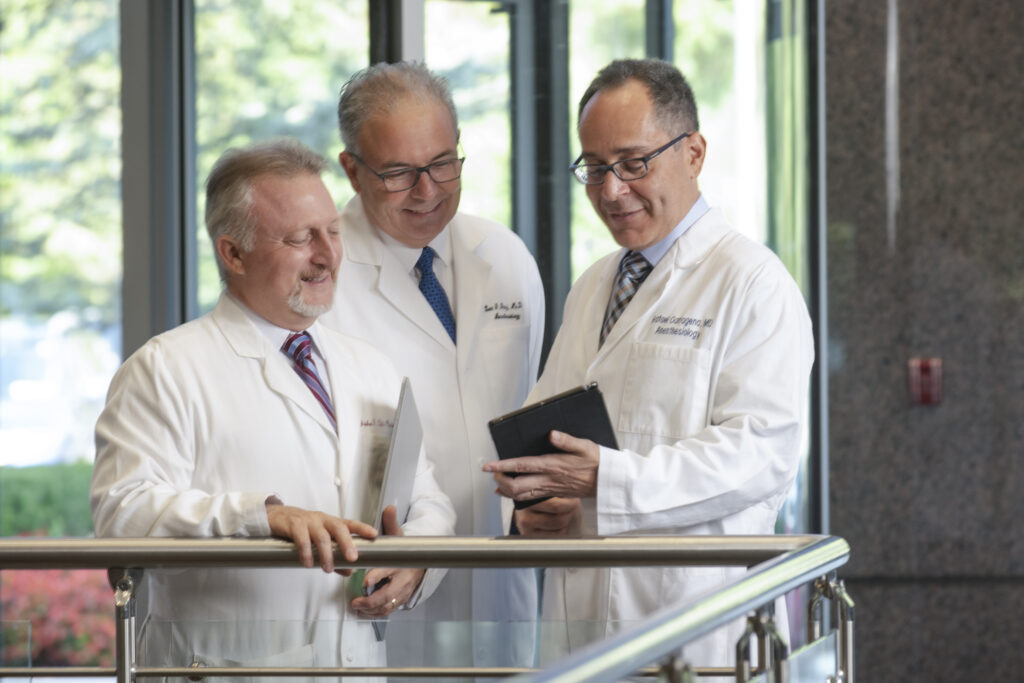
NAPA’s Commitment to Providing Solutions
NAPA takes a leading role in addressing the problem surrounding supply and demand by creating a company culture that supports anesthesia clinicians and the organization’s medical facility partners. Nearly 500 healthcare sites trust the company to provide collaborative, patient-centered anesthesia and pain management care in a wide variety of settings.
“We committed to one specialty, and we committed to be a destination of choice for all providers,” Dr. Di Capua says.
As a clinically-run organization, the NAPA philosophy embraces the clinical side of the specialty, but also supports nonclinical colleagues for their business expertise.
“The combination of the two is like one plus one equals three,” Dr. Di Capua explains. “We’ve scaled our organization to support clinicians. That support results in both clinicians and non-clinicians who have enough resources and time to truly mentor our clinical leaders, participate in research and work with our medical facility partners to determine how we can assist them with their strategies and their challenges.”
Although NAPA is a large organization, it has ample resources to support teams locally in the field rather than relying on remote teleconferences to find solutions.
“That investment of connecting the scale of the company to the frontline of care is unique to us,” Dr. Di Capua says. “It makes people feel supported in their communities despite this challenging time.”
As the face of medicine constantly changes, NAPA embraces the changes to accommodate the diverse needs of professionals working in various settings.
“We know that we have to provide the right environment for different people,” Dr. Di Capua says. NAPA works hard to satisfy providers in every environment within the anesthesia arena — from those who prefer the challenges of complex cases and quaternary referral centers, to those who strive for work-life balance and more bread-and-butter cases.
“We were very diligent in expanding to all these environments,” Dr. Di Capua says. “There is a place for everyone who joins the organization and the flexibility to shift their focus as their personal life and career goals evolve.”
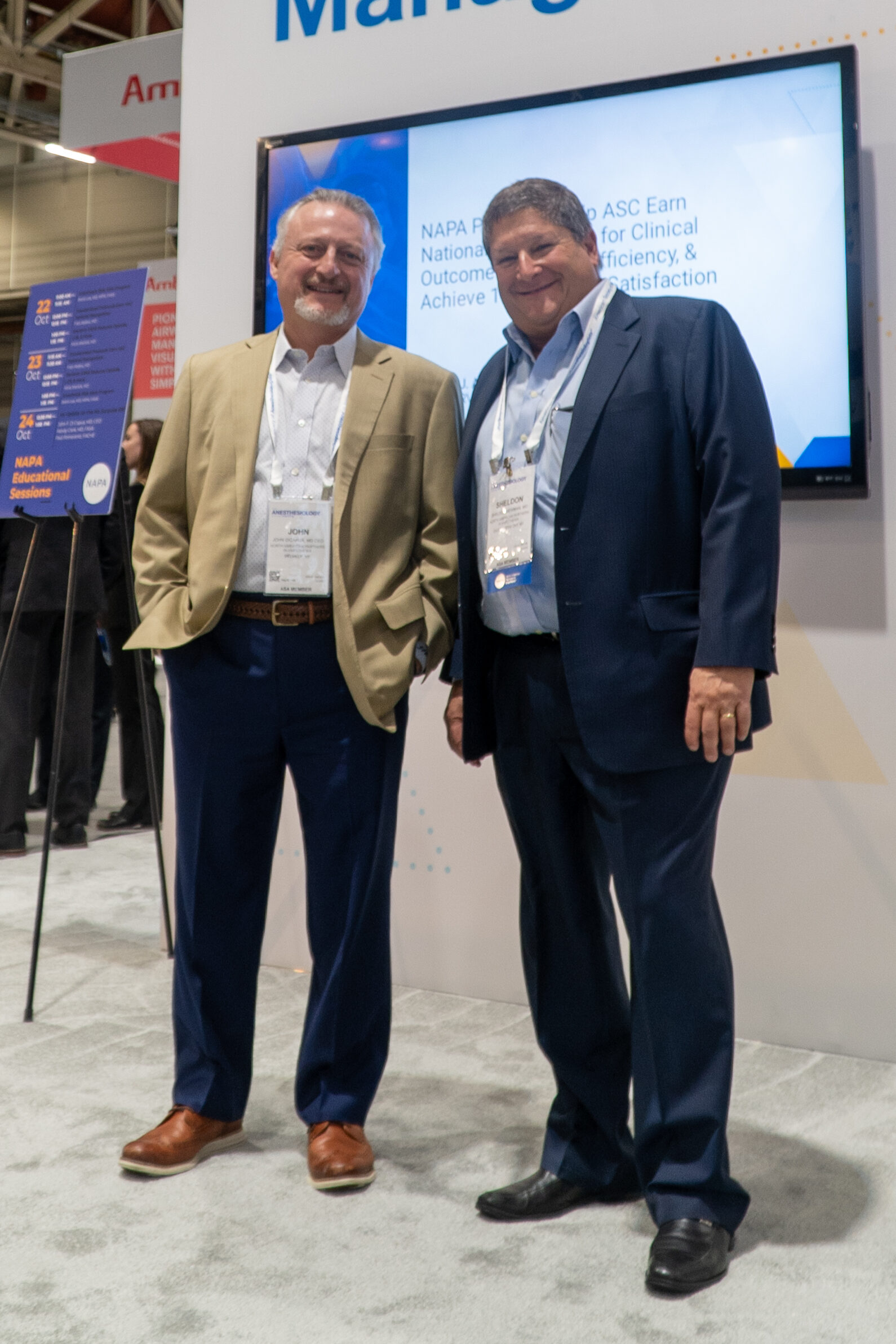
(L–R) Dr. Di Capua; Sheldon Newman, MD, Regional Vice President, Clinical Services, New England Region
Investing in Professional Development
NAPA’s investment in internal training programs gives professionals within the organization, both clinical and non-clinical, the opportunity to expand their knowledge and take on different tasks, responsibilities and roles throughout their career. Dr. Di Capua is a prime example, starting his career as a clinician before transitioning into clinical leadership, academics and later a corporate leadership role at NAPA.
“The ability to try new things and pursue your curiosities under this big umbrella called health care is a tremendous benefit for clinicians. That is why we make those opportunities and pathways available to all the clinicians in our organization,” Dr. Di Capua says, adding that NAPA’s leadership training program takes about a year to complete. “We really get right to the tools that anesthesia clinicians are going to need to be successful as leaders within their teams and in partnership with their facility leaders. Much of this training is something one never receives during medical education.”
Those who complete the curriculum may later qualify for leadership roles integral to company expansion. It also facilitates better working relationships with their peers and colleagues.
Supporting Anesthesia Professionals at Work
Creating a destination of choice is a fundamental aspect of NAPA’s philosophy. To attract providers preferentially over other facilities, NAPA partners with facilities to create healthy work environments that help lessen some of the burdens often placed on providers, enabling them to focus on patient care.
“We feel responsible to our facility partners who have placed their confidence in us to do the best that we can to have the most ideal clinical vacancy rates, and one way to do that is by creating an environment in which clinicians want to work and fully focus on their craft,” Dr. Di Capua says.
Pipeline to the Future
NAPA’s residency and fellowship programs train future anesthesiologists to help meet the growing demand for these specialists
“It’s the responsible thing to do now,” Dr. Di Capua says. “We are partnering with our institutions because meeting the community need is paramount. We have made the decision to put aside financial considerations and just say, ‘Let’s train more people.’”
In the short term, anesthesia residents can contribute to the workforce, and in the long run, NAPA’s residency program builds a supply of seasoned anesthesiologists. NAPA’s residency programs also expose participants to the business dynamics of anesthesiology prior to graduation.
“We even created an administrative fellowship that allows clinicians in training to come spend time with us so they get an immersive experience on what is happening as an industry,” Dr. Di Capua says.
Research and Diversity
For more scientifically oriented students, NAPA helps fund research opportunities.
“We aim to increase the training of clinicians by investing in the academic mission of the specialty,” Dr. Di Capua says. “NAPA is a proud supporter of Foundation for Anesthesia Education and Research, an organization that supports young clinical investigators.”
Diversity is also a primary focus of their program. NAPA has made investments in Case Western Reserve University to increase the number of women and minority groups represented in medicine, and Diversity CRNA to expand mentorship. NAPA believes society benefits as a whole from a broader portion of the population becoming professionals in anesthesia, inspiring the next generation of caregivers and offering patients clinicians who represent them.
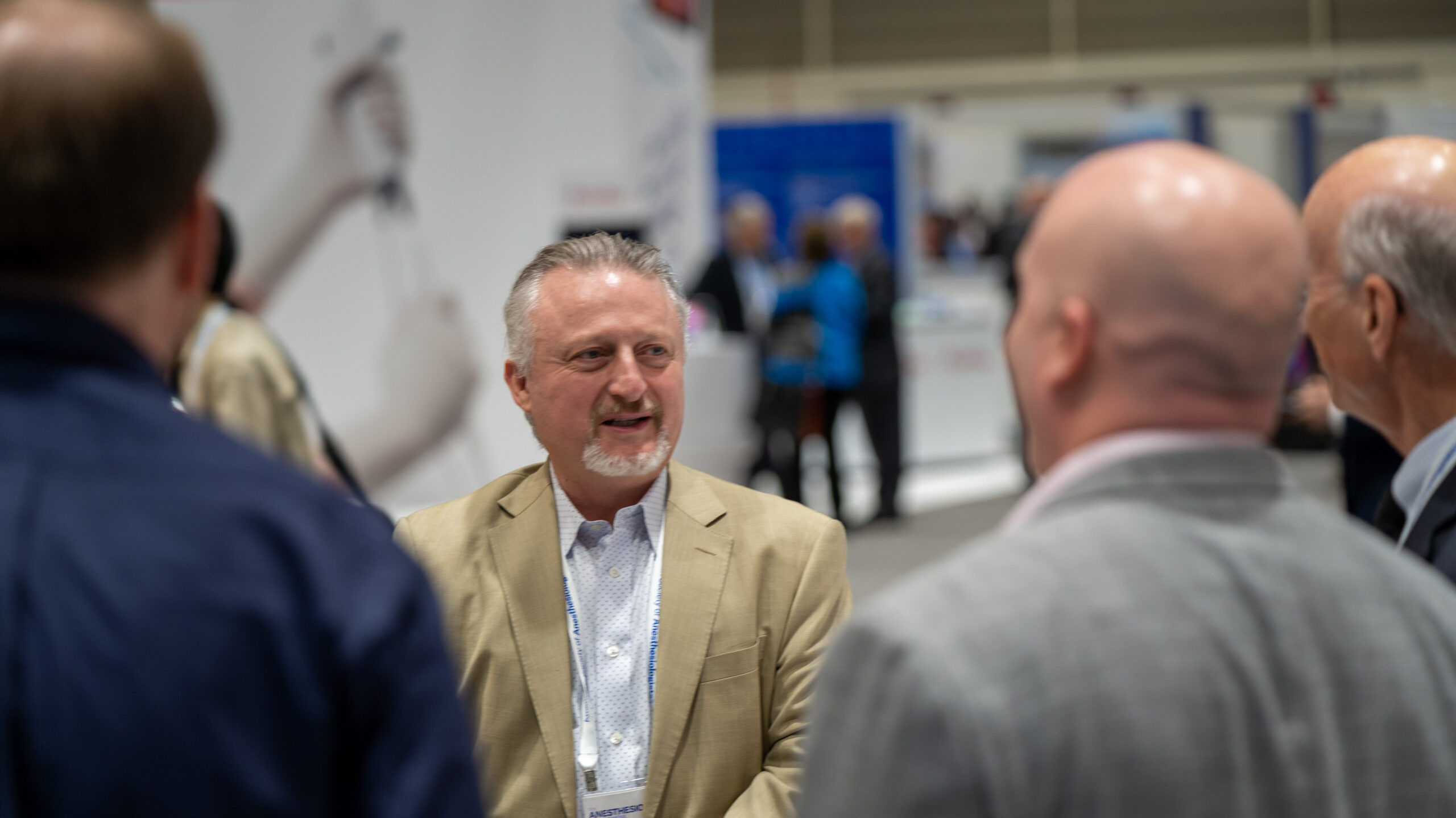
NAPA by the Numbers
- 21 states
- Nearly 500 facilities
- 6,000+ clinicians
- Nearly 3 million patients annually
A Supportive Work Culture
NAPA hired about 1,000 people throughout the pandemic, when many other organizations had either stopped recruiting or furloughed providers. By taking the opposite approach, Dr. Di Capua says, “Our providers saw that when they were most at risk, we actually took care of them and doubled down on recruiting people to work.”
To stay in touch with clinicians in the field and keep the company aligned, NAPA holds an annual meeting, along with corporate and regional town hall meetings to communicate and collaborate with their clinicians. NAPA’s dedication to provider well-being is paying off, as many of its recruits are referred by people who already work for the organization.
A Dedication to Measurable Outcomes
NAPA elected to track quality outcomes data to improve patient safety and outcomes well before the industry required healthcare providers to collect the information. NAPA is a Patient Safety Organization certified by the Agency for Healthcare Research and Quality — one of fewer than 100 in the U.S. — allowing NAPA to share quality data across the country. NAPA’s Qualified Clinical Data Registry draws on deidentified data from nearly 3 million patients annually, allowing physicians to make well-informed decisions about patient safety and well-being best practices, and share that knowledge across their entire network of anesthesia clinicians in 21 states.
“We can analyze and disseminate information across our platform that allows us to learn lessons in an aggressive manner,” Dr. Di Capua says. “Those best practices become platform-level best practices and lead to some of the lowest morbidity and mortality rates among anesthesia providers.”
As a clinician-backed organization, NAPA is confronting critical provider shortages and access challenges as a group of professionals who sincerely want to meet the nation’s healthcare needs.
“We’re doing all this work in order to improve the medicine, first and foremost,” Dr. Di Capua says. “If you do the medicine right, the economics and business will follow. At the end of the day we are all patients … so for personal and professional reasons we are obligated to have these kinds of conversations to try to get the word out.”
“For an organization to develop a more diverse culture, you must put in the work. You must identify and address explicit and implicit biases. You must build more inclusion. At NAPA, we’ve invested heavily in these efforts as we actively try to improve our culture. We have leadership positions focused on diversity, and we hold focus groups. We aim to create a more equitable environment for all our anesthesiology professionals.”
— John F. Di Capua, MD,CEO of North American Partners in Anesthesia
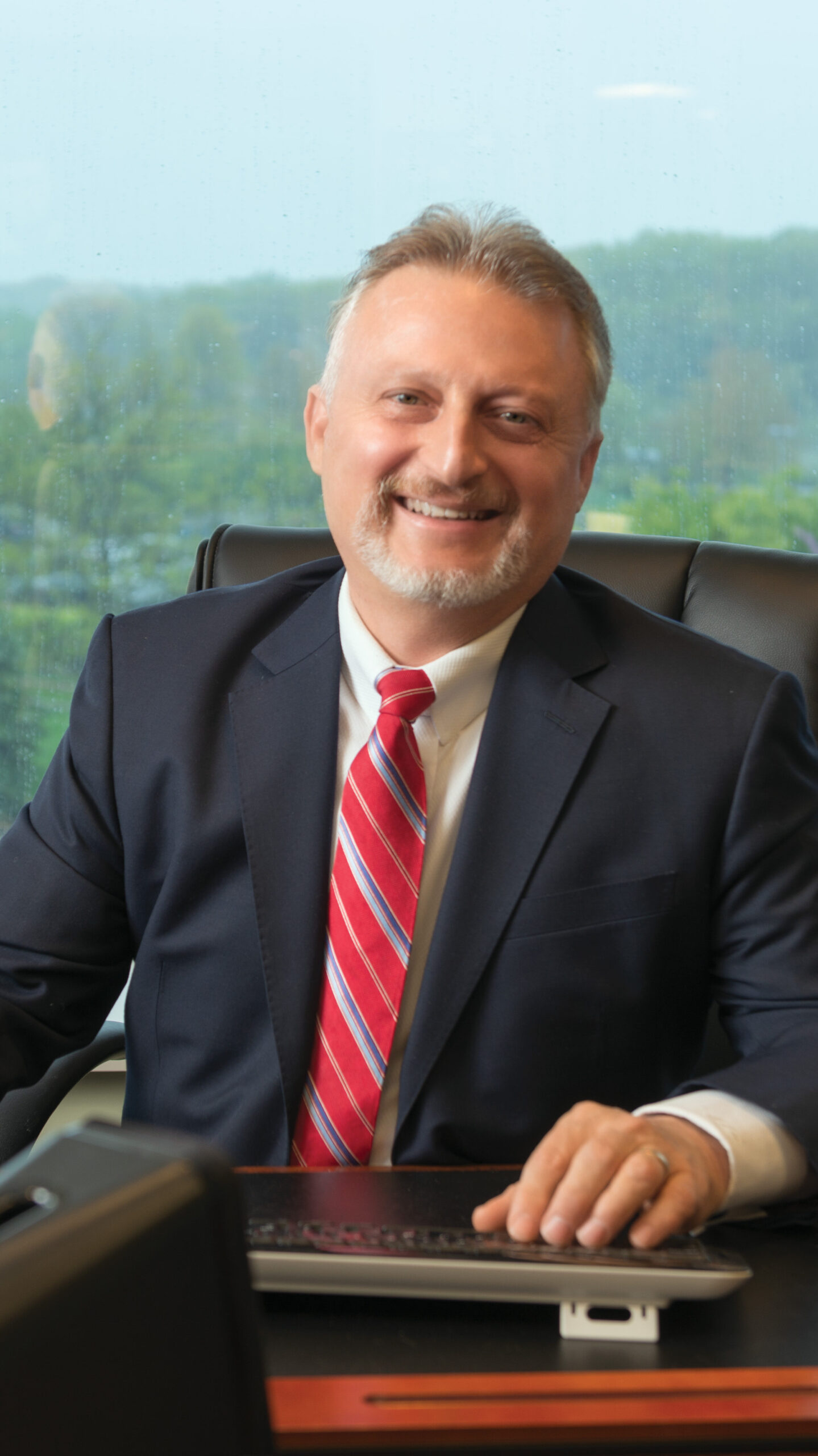
Discover anesthesia opportunities and staffing solutions at NAPA. Visit NAPAanesthesia.com to learn more.
